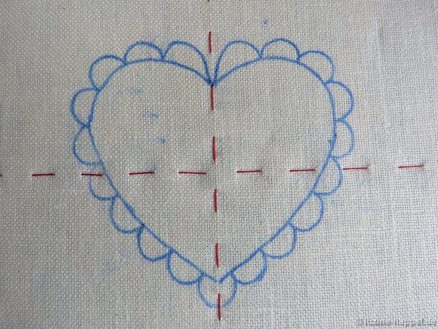Since I made a comparison of iron-on transfer pencils, I prefer to use the DEKA Draw & Iron Pencil for transferring my designs onto linen. Now and then I noticed breaking cores. But lately I have received messages from some of my customers being very dissatisfied with their pencils. They report that the cores always break during sharpening, and so the pencils become used up too quickly. I was a little bit stumped until I was told that the sharpener is the reason for the breaks.
I visited the web page of Faber-Castell and found these hints:
Preventing core breakage
Always make sure that your sharpener still has a sharp blade. Blunt blades fray/tear the wood and allow the core to break easily, especially with the more delicate/softer coloured pencils. Very often the dreaded breaking of the tip is due to an old or blunt sharpener and not to the pencil.
Angles of sharpeners
For different pencils with different applications, there are also corresponding sharpeners with partially adapted angles: the harder the core, the sharper the angle. Pencil sharpeners usually have a 21° angle, while the tip of crayons can usually be slightly duller (about 24°).
There are different sharpeners for graphite and for coloured pencils.
I immediately ordered one and tried it out on some of my different DEKA pens – old and new ones.
After only a very few turns, the pencils had nice points.
In comparison to the pencil tips shown in my first article on iron-on transfer pencils, I noticed that the tips were now all shorter and wider.
I used a pencil sharpened with the new sharpener to draw my design onto transparent paper and was satisfied. The lines fine and well defined.
The point was scarcely worn down after finishing the line drawing of the small design.
I prepared a piece of linen with marking lines, and using the pre-heated iron I warmed the ironing surface and
then warmed up the linen.
Finally, I ironed the design onto the linen.
After only a short time of heating, I carefully proofed the transfer, and it was good.
So I removed the transfer paper and saw a well transferred design.
In comparison to the drawn lines on the paper, the ironed lines on the linen are somewhat thicker, but still very good to use.
Then I tested this newly sharpened pencil on a larger piece. For a very large (50 cm X 70 cm) and elaborate design, I had to resharpen it only a few times. Unfortunately I did not picture it before ironing. So now I can show only a small detail of it – the remainder is too light to see.
Conclusion: Correct sharpening is absolutely important to get a good result while working with DEKA iron transfer pencils.
















Merci Luzine ..me suis empressée de le commander…A bientôt